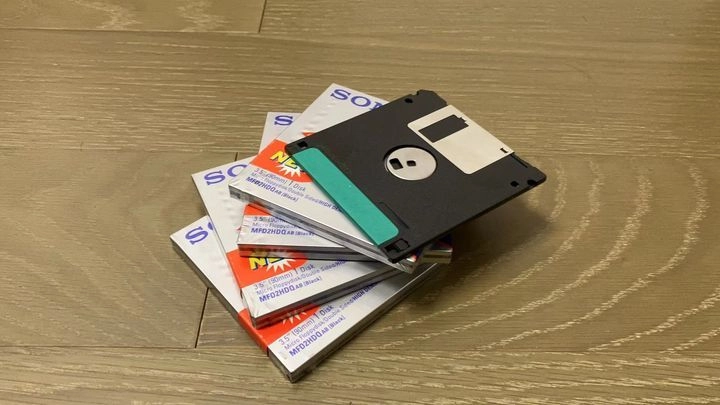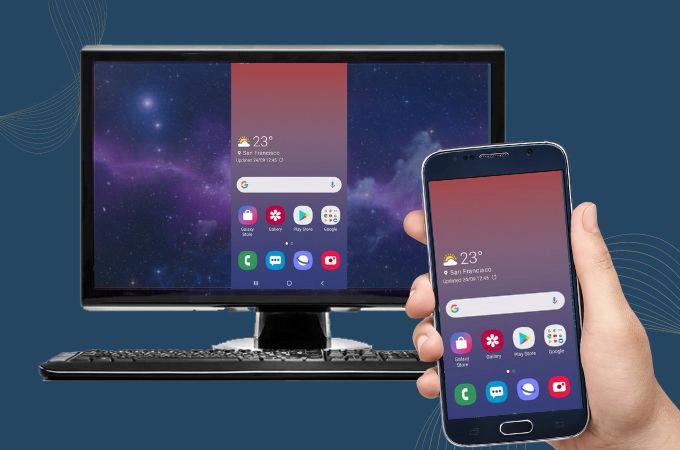Digital Storage Archive: Floppy Disks | Stories Written on Magnetic Fields
Before I start this article, I would like to ask you a question: Do you know why the Windows system drive letter starts from the C drive, and for whom the A and B drives are reserved? Many digital enthusiasts will give you an answer: Disc A is for 3.5" floppy drives and Disc B is for 5.25" floppy drives. The answer is obvious.
The answer is obvious.

As shown here From the first 3.5-inch floppy disc in 1979 to its near-disappearance today, there's a lot behind that little floppy disc. It was popular for nearly 30 years, and in its heyday there were 8 billion floppy discs in use a year. Its impact on the computing world was so profound that when we think of the word "save," the icon of the 3.5-inch floppy disc comes to mind. How did this storage device leave its mark on the riverbed of time?
The advent of the floppy disc…
In 1967, IBM formed a team, code-named "San Jose". They were entrusted with the task of developing an inexpensive data storage device for the IBM mainframe. The team members lived up to their name and set their sights on the disk. They envisioned a storage method like the disk, rotating a disc-shaped storage medium and manipulating the data by the back-and-forth motion of the read head.
Only instead of a hard metal disc like a disk, the storage medium became a plastic film coated with magnetic paint; the head and controller were placed in an external drive. The main body was just a sheet of plastic film, which is portable when you think about it.
And so, in 1971, the first modern floppy disc was born. The first floppy discs were 8 inches in diameter and held a paltry 80 KB of data.
As a prototype, it was only a little bit powerful, and it was understandable that it would be smaller and more powerful when it was mass-produced.
So the floppy disc quickly swept the world after mass production and became the first modern portable storage device. Based on this, floppy discs were derived from 5.25-inch, 3.5-inch and other specifications. Floppy discs logically became the "half of the world" of storage devices.
Prevailed for a while
Since the introduction of the 8-inch floppy disc, floppy discs have quickly become popular in the computer world and have become synonymous with portable storage. Back then, hard discs were thick and heavy, and everyone wanted a memory they could "carry in their pockets" (just an analogy, how could an 8-inch floppy disc fit in their pockets). And so it was. The floppy disc came along. But how many households could afford a computer? Home computers were not yet common, so the popularity of floppy discs was limited. So at that time, floppy discs were generally just toys for banks, governments, research institutes and other institutions. Until after the 1980s, this situation was completely broken by the popularity of home computers. At that time it was the time when home computers blossomed, Apple Macintosh, PC compatibles and other personal computers swept the world, and floppy drives also logically became the standard equipment for home computers. Higher-capacity and lighter 5.25-inch floppy discs and 3.5-inch floppy discs were developed, quickly replacing the 8-inch floppy discs and adding fuel to the floppy discs' popularity.
A few mint Sony MFD-2HD 3.5" floppy discs from my collection The familiar compact disc didn't become commonplace until the mid to late nineties, not to mention the popularity of USB flash drives, with the USB interface not being designed until 1994.
So the rise of the floppy disc may be more familiar to some older digital enthusiasts. Not to mention that I, as a post-05 generation, probably wouldn't even know about floppy discs if I wasn't interested in computers. The first time I heard of floppy discs was when I was in primary school at a classmate's house for dinner, listening to the classmate's father talk eloquently about computers at the dinner table, telling me how he used floppy discs with copies of novels and games in primary school microcomputer class to sneak around and catch fish.
Ahem, back to the point.
The advent of home computers made floppy discs soar in popularity. Technological advances have made floppy discs lighter and more compact. Because of the lack of competitors in the market, floppy discs as a mobile storage brother's status is unshakeable. The floppy disc's status as a computer necessity lasted for almost a decade.
Flying too high and falling too hard*
The status of floppy discs as a computer necessity has lasted for nearly a decade. Until 1996, floppy discs entered the most prosperous period. In 1996 alone, there were 8 billion floppy discs in use worldwide. The annual output value of domestic floppy discs also reached 600 million.
At this time, the disadvantages of floppy discs gradually came to the fore.
The first is the stability of data. Used floppy discs know, in fact, floppy discs than mechanical hard discs are much more pretentious, there will be times when it does not move to read out the data situation. You say you save a Word document, run from home to the company, the results of a plug - "0x80070022 read error", this mind shall not directly collapse? Secondly, the floppy disc read and write really too! Slow! Slow! Capacity is also too small. So big, the capacity is only 1.44MB, how to compare with the disc ah!
Various kinds of optical discs (such as CD-R) entered the market when floppy discs were at their peak.
As soon as they entered the market, optical discs directly cut through the mess, and snatched almost all the market share of floppy discs in one go. Poor floppy disk ah, because the market share is basically snatched by the disc, angry at the inner collapse and crying, oooh, oooh, oooh, oooh, so poor ah.
Disc: What? Are you not convinced?
Although the back of the disc was also eaten by the USB flash drive is.
The end of the story ……
The floppy disc lost, no doubt about it. It is not actually lost to the disc, but to the choice of the market, lost to itself. When chatting after tea, we sometimes discuss another issue: is there any possibility of a comeback for floppy discs? After all, you see, even the tape are back in service (if you are interested, I can be a special issue to talk about), floppy discs have the possibility of a different form to come back?
As I wrote this, I remembered that I hadn't saved it yet, so I clicked on the little floppy disc on the screen. You see, it never had to come back. Because it never left.
This story, written in magnetic fields, continues.


